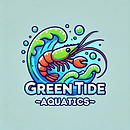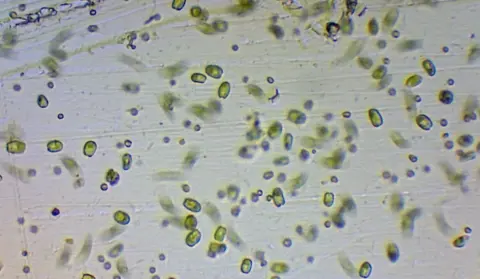🌿 Nannochloropsis
- Dion Tomaras
- May 6
- 3 min read

The Microalgal Powerhouse Fuelin
g Aquaculture and Bioinnovation
Nannochloropsis is a genus of microalgae garnering significant attention in marine biology, aquaculture, and biofuel research. Its unique characteristics and versatile applications make it a subject of extensive study and commercial interest.
🔬 Taxonomy and Morphology
Domain: Eukaryota
Kingdom: Chromista
Phylum: Ochrophyta
Class: Eustigmatophyceae
Order: Eustigmatales
Family: Monodopsidaceae
Genus: Nannochloropsis
These unicellular, non-motile algae are typically spherical to ovoid, measuring approximately 2–5 micrometers in diameter. Unlike many other microalgae, Nannochloropsis species contain only chlorophyll a, lacking chlorophylls b and c. They are rich in carotenoids such as astaxanthin, zeaxanthin, and canthaxanthin, contributing to their distinctive coloration and antioxidant properties.
🌍 Habitat and Distribution
Nannochloropsis species are predominantly marine but have also been identified in brackish and freshwater environments. Their adaptability to various salinities makes them suitable for diverse aquaculture systems. Species like N. gaditana and N. oceanica are commonly found in coastal regions and are often utilized in commercial applications.
⚗️ Biochemical Composition
One of the most remarkable features of Nannochloropsis is its high lipid content, particularly eicosapentaenoic acid (EPA), an omega-3 fatty acid essential for human and animal health. The cell walls are robust, composed of cellulose and sulfated polysaccharides, which protect the cells and contribute to their stability in various environmental conditions.

🧬 Genomic Insights
Genomic studies have revealed that Nannochloropsis species possess compact genomes with high gene density and minimal non-coding regions. Notably, they have an expanded set of genes involved in lipid biosynthesis, including multiple copies of diacylglycerol acyltransferase (DGAT) genes, which play a crucial role in triacylglycerol (TAG) formation. This genetic makeup underpins their capacity for high lipid accumulation, making them prime candidates for biofuel production.
🐟 Applications in Aquaculture
In aquaculture, Nannochloropsis serves as a vital feed component due to its nutritional profile:
Larval Feed: Its small size and high EPA content make it ideal for feeding fish larvae and rotifers.
Water Quality: It contributes to maintaining water quality by competing with harmful algal species and providing oxygen through photosynthesis.
Enrichment: Used to enrich live feeds like rotifers and Artemia, enhancing their nutritional value for higher trophic levels.
🌱 Potential in Biofuel Production
The high lipid content of Nannochloropsis positions it as a promising source for biodiesel. Its ability to grow rapidly and accumulate substantial amounts of TAGs under nutrient-deprived conditions makes it suitable for large-scale biofuel production. Research is ongoing to optimize cultivation methods and genetic engineering approaches to enhance lipid yields further.
🧪 Cultivation and Harvesting
Cultivating Nannochloropsis requires controlled conditions:
Light: Continuous illumination with specific wavelengths promotes optimal growth.
Nutrients: Balanced supply of nitrogen, phosphorus, and trace elements is essential.
Harvesting: Due to their small size, harvesting methods like flocculation, centrifugation, and filtration are employed to concentrate the biomass efficiently.
🔬 Research and Development
Ongoing research focuses on:
Genetic Engineering: Modifying metabolic pathways to increase lipid production.
Photobioreactor Design: Developing systems that maximize light utilization and biomass productivity.
Co-cultivation: Exploring synergistic relationships with other microorganisms to enhance growth and product yields.
📚 Conclusion
Nannochloropsis stands out as a microalga with immense potential across various industries. Its robust nature, high nutritional value, and capacity for lipid accumulation make it a cornerstone species in sustainable aquaculture and biofuel production. As research progresses, we can anticipate even broader applications and improved cultivation techniques, solidifying its role in the blue economy.




